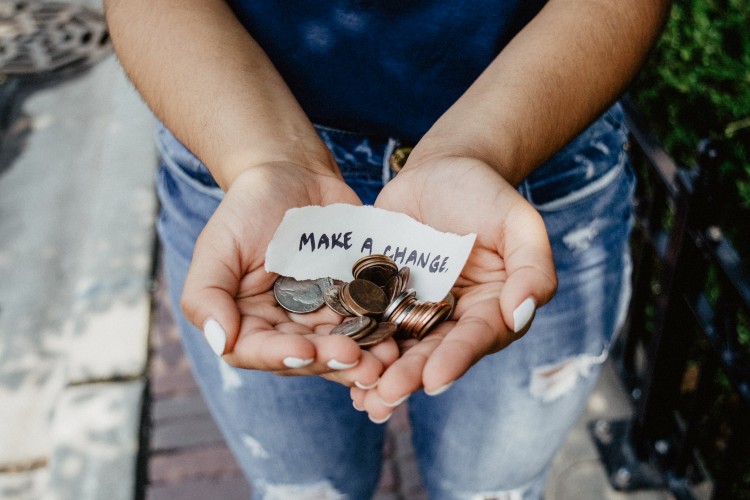

Fundraising is essential for many organizations and projects. You may have heard of the fundraising cycle before, but have you used it to make the process more effective?
Fundraising can be a big challenge. If you do it right, though, the rewards and the impact they make could be huge.
Below, we’ve examined the 5 key stages of the fundraising cycle in depth so that you can enhance your fundraising strategy.
The fundraising cycle is a concept that can help you make the most of the fundraising process. It involves 5 steps that can help nonprofit organizations improve their interactions with donors.
These steps (identification, qualification, cultivation, solicitation, and recognition) will help you determine a donor's current stage in the fundraising cycle and guide you through the next phase.
Donors are motivated by different things, and understanding more about them can help you in your operations.
Your fundraising strategy needs to be well planned for it to be effective. So, it's crucial to take the fundraising cycle into account!
The first step of the fundraising cycle is identification. This is when you begin to seek out potential donors and opportunities. It is important to understand who you will be asking for donations.
However, it is equally important to plan what you will ask for from each prospective donor. For this reason, it is a must to set goals.
New donors are critical, but not the only option you have. Keeping an up-to-date list of all people who have donated to your cause is essential. When you’re on the lookout for new donors, don’t forget to review your database and consider consistent and passionate donors.
Conducting wealth screenings of those in your database can be helpful in setting goals and deciding what to ask for.
In this step, you need to consider all potential donors. Keep in mind that donors on your list may decide not to donate. To plan for this, create a list of potential donors that is much longer than you need.
This step might take some time, depending on how much support you currently have and how much you have predicted you will need. However, think of this as building a solid foundation for the rest of the process.
Qualification goes hand in hand with identification. Think of it as a more in-depth version of the first step.
Qualification requires you to carefully review and define all the donors on your list. Basically, you need to conduct research on each potential donor you have identified.
This means that you should note down how much they may be capable of donating, who they may know in the community, and their areas of interest. This information will help you with developing personalized strategies for each donor that can be used in the next steps.

This step of the fundraising cycle involves strengthening your relationships with the people or organizations on your donor list. This will give you a foundation to work from when you decide to ask for a donation.
When building a relationship, you want to involve potential donors in different aspects of the project or your nonprofit organization. Think about offering them volunteer opportunities, inviting them to various events you’re a part of, and including them in meetings.
Plan out this period in advance, as it can take up to a year. It is important to have completed the qualification stage to the best of your ability, as it is important to know where the donor's interests and passions lie. This knowledge can help tremendously with getting donors interested in your operations.
Offer your potential donors a range of engagement opportunities they could get involved with or keep them included and up to date in your operations. This ensures new donations and sustained support.
Making sure you keep donors continuously engaged will aid in the sustainability of your project.
This stage of the fundraising cycle can be your make-or-break moment—it’s time to ask for donations.
If you’ve worked hard on the previous steps, you should have a strong foundation. Many strategies can be used to ask potential donors for their support, whether face-to-face or digitally.
Personalize the way you ask each donor for support, depending on factors such as their preferences and the potential size of their donation. For example, you may send a simple email to people who you believe will donate small amounts but would put in some more effort with top donors.
You also need to think about how frequently you’re going to ask each group of prospective donors.
Recognition, otherwise known as stewardship, is the step in the fundraising cycle where you show donors your appreciation. Although this is the last step, it is an important one to revisit multiple times throughout your efforts. Showing gratitude regularly is a good way to retain your support system.
There are several great ways to express your thanks after a fundraising effort. Celebrating your successes online, calling donors to thank them for their support, and sending personalized thank you gifts or notes can make donors feel appreciated.
Recognition is about maintaining a good relationship and connection with each of your donors after the fundraising process. Recognition could be public or private - perhaps even a little bit of both.

The five steps of the fundraising cycle can help you succeed in your fundraising journey. Remember that this cycle is not static. Rather, you need to decide where you are in it and be aware of any elements that change.
If your fundraising efforts are continuous, you may have different donors in different stages. Keeping track of this is important. The fundraising cycle is a critical element when seeking donations. As such, it's important to prioritize it in your strategy.